Culture in the EU (6): Czech Republic
Posted: June 8, 2016 | Author: Ian Pace | Filed under: Architecture, Art, Culture, Dance, Film, Music - General, New Music, Theatre | Tags: Alena Šrámková, animation, black-light theatre, closely watched trains, czech electronic music studios, czech republic, Divadlo Alfréd ve dvoře, Divaldo Minor, DOT504, Farm in the Cave, Jan Klusák, Jan Švankmajer, Jarmil Burghauser, Jaroslav Seifert, Jáchym Topol, Ján Mančuška, Jiri Barta, Jiri Srnec, Jiří Kolář, Jiří Menzel, Karel Hubáček, Konfrontace, Laterna Magika, milos forman, Miloslav Ištvan, Miloslav Kabeláč, Mirka Eliášová, Nové cesty hudby, Ota Pavel, Petra Hauerová, puppet theatre, Rudolf Růžíčka, Skupina 42, TOW, Václav Havel, Václav Kučera, Věra Chytilová, Zbyněk Baladrán, Zbyněk Vostřák, Zdeněk Fránek | 2 CommentsAs a solid supporter of the Remain campaign, in the 18 days from June 5th until the European Union Referendum on June 23rd, I am posting a selection of links and other information about music, literature, film, visual art, dance, architecture, etc., from each of the EU nations.
I make no claims to be comprehensive in any case, and my choices undoubtedly will reflect my own aesthetic interests – but I believe that may be more interesting than a rather anonymous selection of simply the most prominent artists or art. All work comes from the post-1945 era, the period during which the EU has come to fruition, but may (and often will) include work which dates from before the nations in question joined the EU. As I am writing in English, where translations exist I will use these. Time does not allow for detailed commentaries, I just throw these selections out there in the hope others will be interested in the extraordinary range of culture which has emerged from citizens of the EU.
Czech Republic
The Czech Republic was part of the single state of Czechoslovakia from 1918 until 1993. Through the course of this blog (and in the later one on Slovakia), I will refer to the area which became the Czech Republic by that name from 1945 onwards, without neglecting the effect of the unified state.
Czech cinema was relatively conventional in the 1950s, but this changed dramatically by the end of the decade, and led to an overwhelming wave of creative imagination from then onwards. One of the first films to win an international audience, is the notorious Ostře sledované vlaky/Closely Watched Trains (1966) by Jiří Menzel (b. 1938).
http://www.dailymotion.com/video/xzrgmd_closely-watched-trains-1966-pt-1_creation
http://www.dailymotion.com/video/xzqeyw_closely-watched-trains-1966-pt-2_creation
Soon afterwards followed the Czechoslovkian New Wave, most active in the 1960s and early 1970s, centered around the Film and TV School of the Academy of Performing Arts in Prague (FAMU). Characteristic of this movement is Věra Chytilová’s abstract, elemental and fantastical tale of two teenage girls undergoing a Candide-like odyssey: Sedmikrásky/Daisies (1966)
Few other major New Wave films are available online, but here are a few clips, trailers and features:
The Czech Republic has one of the most distinctive animation cultures in Eastern Europe. Jiří Trnka’s film Ruka/The Hand (1965) is thought by many to be amongst the greatest animations of all time.
The most internationally well-known of Czech animators is Jan Švankmajer (b. 1934). Here are three contrasting works.
This is a scene from his 1988 film Alice:
The complete works of a slightly younger figure, Jiri Barta (b. 1948), can be viewed here:
A brief overview of modern Czech literature can be read here. Highly significant in the establishment of an underground literary scene immediately after the war was the poet, writer and painter Jiří Kolář (1914-2002), a quite detailed account of whom can be read here. Kolář was a key member of Skupina 42, a group of modernist artists founded in 1942, but disbanded in 1948. The writer Elinor S. Miller has written in detail about the relationships between Kolář’s work and that of French nouveau roman author Michel Butor.
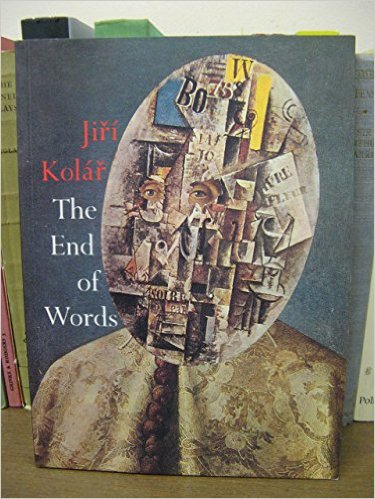
A selection of Kolar’s poems can be read here.
Kolar, ‘No One Ever’
Draw a square on the floor
a circle
a triangle
and a trapezium
Place into each
an everyday item
a book
a gadget
into the last arrange yourself
– test out all sixteen combinations
which can be formed
Afterwards switch on the radio
get undressed
attach to your naked body
the book as well as the gadget
clear your mind of thoughts
remain calm for several seconds and say:
“I loved you since the first moment I saw you…”
Listen attentively and after a while reply:
“I hated you since the first moment I saw you…”
Listen attentively and after a while continue:
“No one has ever love and hated you so much as I have.”
Equally central to post-war Czech literary history is the Nobel Prize winning poet Jaroslav Seifert (1901-1986). Some translations of Seifert’s poems can be read at one site here, and another here.
Seifert, ‘Fragment of a Letter’
All night rain lashed the windows.
I couldn’t go to sleep.
So I switched on the light
and wrote a letter.
If love could fly,
as of course it can’t,
and didn’t so often stay close to the ground,
it would be delightful to be enveloped
in its breeze.
But like infuriated bees
jealous kisses swarm down upon
the sweetness of the female body
and an impatient hand grasps
whatever it can reach,
and desire does not flag.
Even death might be without terror
at the moment of exultation.
But who has ever calculated
how much love goes
into one pair of open arms!
Letters to women
I always sent by pigeon post.
My conscience is clear.
I never entrusted them to sparrowhawks
or goshawks.
Under my pen the verses dance no longer
and like a tear in the corner of an eye
the word hangs back.
And all my life, at its end,
is now only a fast journey on a train:
I’m standing by the window of the carriage
and day after day
speeds back into yesterday
to join the black mists of sorrow.
At times I helplessly catch hold
of the emergency brake.
Perhaps I shall once more catch sight
of a woman’s smile,
trapped like a torn-off flower
on the lashes of her eyes.
Perhaps I may still be allowed
to send those eyes at least one kiss
before they’re lost to me in the dark.
Perhaps once more I shall even see
a slender ankle
chiselled like a gem
out of warm tenderness,
so that I might once more
half choke with longing.
How much is there that man must leave behind
as the train inexorably approaches
Lethe Station
with its plantations of shimmering asphodels
amidst whose perfume everything is forgotten.
Including human love.
That is the final stop:
the train goes no further.
Seifert’s collection Odlevdni zvonu/The Casting of Bells (1967) has been available to read in English for some time.
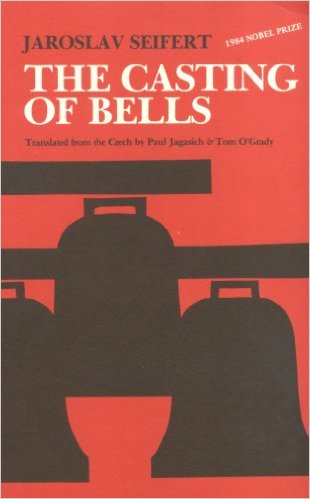
Dissident novelist Pavel Kohout (b. 1928), in his novel White Book, created a terrifying narrative developing Kafka and the Theatre of the Abusrd, relating (though not explicitly) to the craziness of communism, especially following the crushing of the Prague Spring. A short review can be read here.
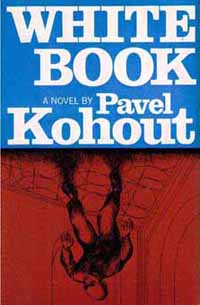
Some of the most disturbing work of writer Ota Pavel (1930-1973) (whose Jewish father and two brothers were incarcerated in camps during the Nazi era) was written when he was coming to terms with his own bipolar disorder and facing a break down. A book of unsettling but memorable tales from Pavel’s childhood was published just after his death as How I Came to Know Fish.
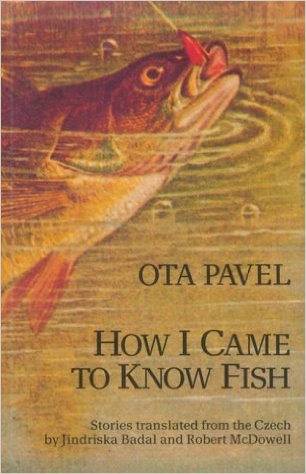
A younger, but no less important, Czech writer is former underground poet and songwriter Jáchym Topol (b. 1962). Some of Topol’s work writes outwards from his experience as a journalist; elsewhere he considers sites saturated by memory, such as the camp of Terezin, during the post-Nazi era, in his The Devil’s Workshop. Here is an important interview with Topol.
A wide range of new developments ensued in Czech theatre throughout the post-war period. One of the most innovative developments was black-light theatre, founded by Jiri Srnec in 1961, which played on the illusion to the eye which encounters black on black. Srnec founded the Černé divadlo Jiřího Srnce.
Here is a sample of Laterna Magika, founded in 1958, whose work mixes projected images with live stage production:
No-one could ignore the work of Václav Havel (1936-2011), who went onto become the first President of post-communist Czechoslovakia, then of the Czech Republic.
Here is a site devoted to Havel’s work, and here is a selection of it:
Puppet theatre is also a prominent feature in the post-war Czech Republic, not least in the theatre Divaldo Minor, dedicated to such work:
The theatre of Divadlo Alfréd ve dvoře focuses on motion and the body as much as words:
Here are some of the most notable contemporary Czech composers:
Miloslav Kabeláč (1908-1979):
Zbyněk Vostřák (1920-1985):
Jarmil Burghauser (1921-1997):
A link to earlier musical worlds, with a certain displaced sensibility, can be found in the music of Jan Klusák (b. 1934):
Rudolf Růžíčka (b. 1941)
Some more samples of Růžíčka’s electroacoustic music can be listened to here.
Several periodicals appeared in the 1960s devoted to experimental music, including Konfrontace (1968-1970) and Nové cesty hudby (1964, 1970).
A whole album devoted to music from the Czech Electronic Music Studios, founded in 1967, specifically from composers Vostřák, Miloslav Ištvan, and Václav Kučera, can be listened to here:
The Czech artistic avant-garde flourished between the wars, but was largely neutered during the communist period. A range of highly iconoclastic artists have come to prominence in this later period; here are a few examples.
Zbyněk Baladrán (b. 1973)
Dead Reckoning (2014)
Ján Mančuška (1972-2011) – website here:
http://janmancuska.com/en/page/show/id/143/title/video
a middle aged woman (2009)
From Invisible (2011)
Here are some of the most arresting examples of post-war Czech architecture:
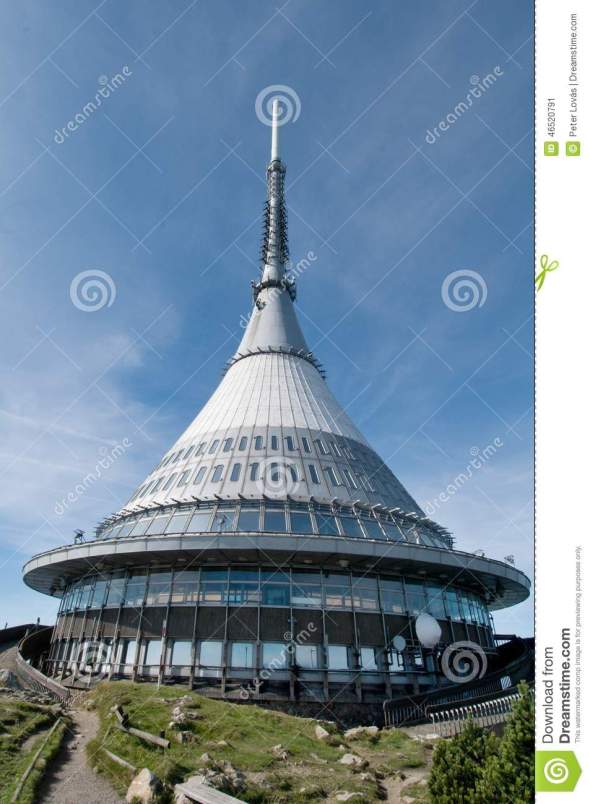
Karel Hubáček, Jested TV Tower (1963-1983).
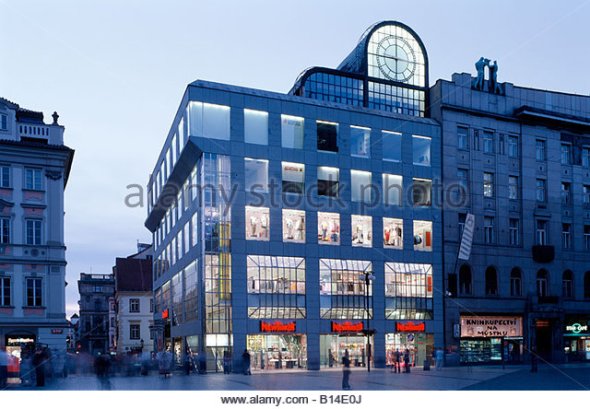
Alena Šrámková, ČKD building (1983).
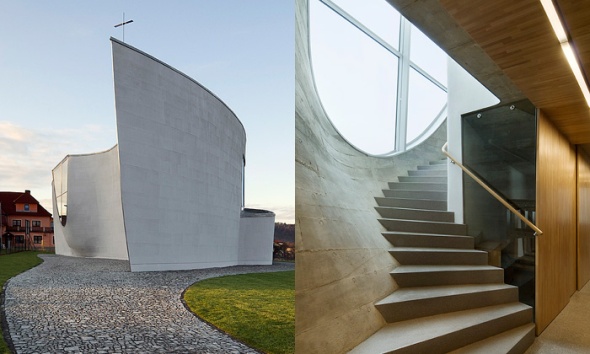
Zdeněk Fránek, Church in Černošice (2010)
Modern dance was an ill-developed genre in the Czech Republic until the fall of communism. But the range of new work which has emerged since then is extraordinary. One very important director of recent decades is Mirka Eliášová (b. 1975), who has done much of her important work with children.
Here is the group DOT504 and their work of dance-theatre Collective Loss of Memory (a wide range of other work from this group can be found online):
In the work of dance company TOW with their director Petra Hauerová (b. 1975), one encounters a mixture of dance with elaborate use of lasers and animation:
Here is a longer sample of TOW’s work.
And here is a sample from the group Farm in the Cave, who were established in 2001:
Farm in the Cave, The Song of an Emigrant (2007).
